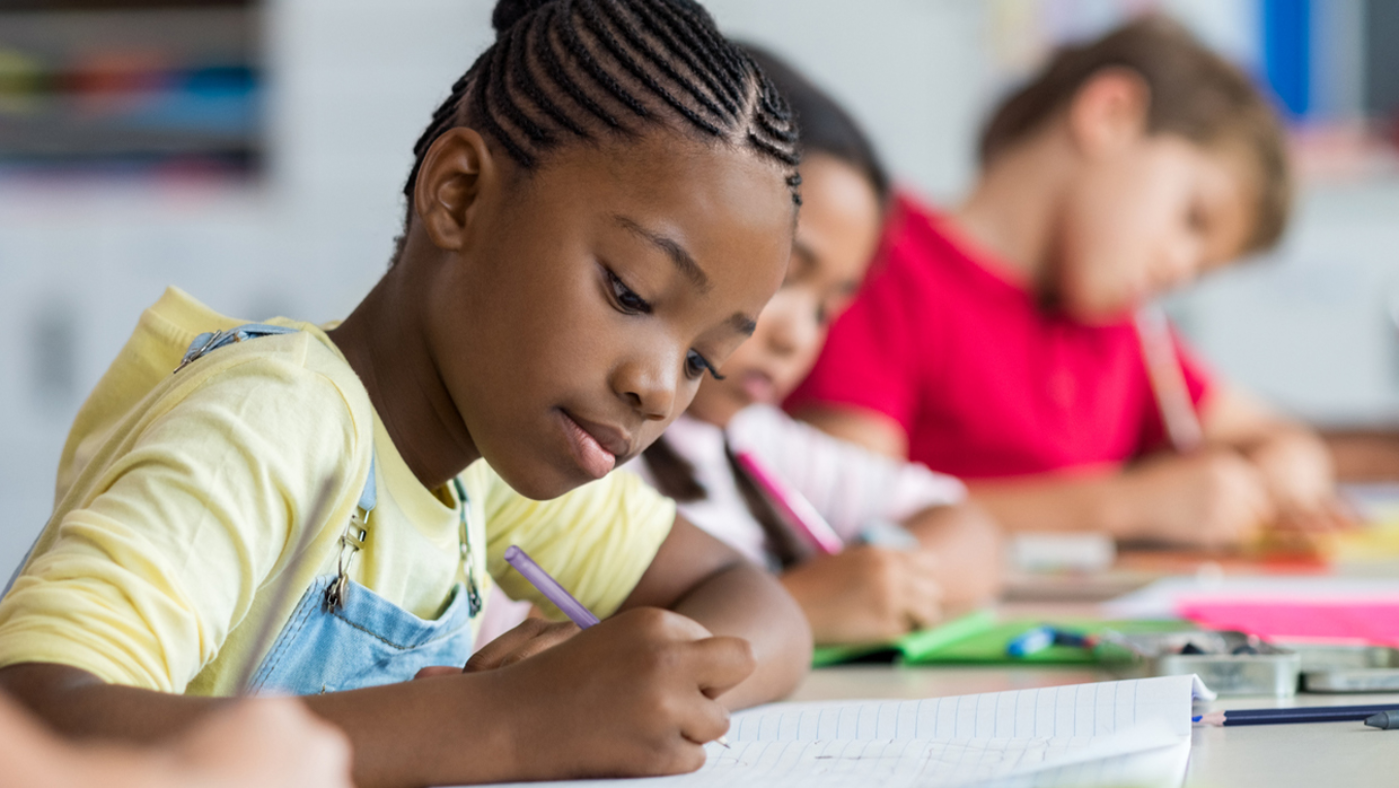Kids love poetry and are typically energized by the myriad of possibilities and the total writing freedom and confidence in their abilities that it brings.
Teachers love it too; it's fun to teach. Plus, students who sometimes struggle with forming letters and words and with writing sentences, and may find writing in school burdensome, blossom in this genre. Free from restrictions in content, form, space, length, conventions, and rhyme, they could let their imaginations soar.
Introducing Poetry to Elementary Students
Teaching poetry writing so that all kids are successful requires an in-depth introduction, including exposure to lots of poetry. Plan on the initial session lasting about one hour. Follow-up sessions — including student writing — may be shorter as less demonstrating becomes necessary.
Typically, the whole class session includes demonstrating poetry writing through one or two of the following:
- Sharing and discussing kids' poems (10–15 minutes)
- Writing a poem together (10 minutes)
- Teacher writing a poem in front of class (5–7 minutes)
- Mini-lesson on features of poetry (5–10 minutes)
- Brainstorming before independent writing (5 minutes)
- Writing a poem independently (15–25 minutes)
- Sharing and celebrating (10 minutes)
During the introductory session, limit the demonstration to sharing and discussing kids' poems. Sharing poems written by other children sends a clear message: "Kids just like you wrote these poems. You can write poems too."
As students listen to and read poetry, make sure they see and hear immediately that a poem:
- Can be about anything
- Can use few words
- Has a unique form and shape
- May or may not have rhythm and a beat
- Often ends with a punch
- Has a title
- May use invented spelling
- Let's us get to know the poet
- Is easy to create
- May be serious or humorous
- Usually expresses important personal feelings
Read aloud and show at least five or six kids' poems. These are first-draft poems, thoughtfully conceived but quickly written with minimal revision. The purpose here is for students to discover the fun and joy of writing.
After reading a poem, ask students, "What do you notice? What do you like?" Comment on what the writer did and note many of the following as you discuss the poem as a whole:
- Topic
- Word choice
- Expression of feelings
- Rhythm
- Shape
- Line breaks
- Title
- Ending line
- Special or missing punctuation
Putting Pen to the Page
At the beginning of a poetry-writing session, do some oral brainstorming. Rather than asking every student what they're going to write about (which is time-consuming and allows for only a brief response), ask several to talk in detail about what they think they might like to write a poem about. With the whole class listening, talk with each poet. These one-on-one conversations encourage each student to pursue a topic in which they're interested, and to think about word choice, beginnings, endings, and so on.
Let them know that they'll have about 15 minutes of "quiet" writing with voluntary sharing afterward. Remind them to also put their name and a date on each poem so they have a permanent record of their work.
Students should then go back to their seats (or writing places) to begin their poems.
As children begin to write, circulate about the room and briefly talk with each student. The main purpose here is to encourage, support, and affirm each writer's efforts.
Celebrate the Poems
After the sustained writing time, invite students to share their poems. Because poems are usually fairly short, sharing time goes quickly. All children get a chance to read aloud if they choose to do so.
The purpose of sharing is to celebrate students' efforts. Sharing the poem congratulates the writer, affirms the effort, serves as a possible model for other students, and encourages the writer to continue writing. When the writer reads, the class as a whole can clearly hear the voice of the poet.
There should be little critique during sharing time. The purpose in writing poetry is to free kids up to write, to make poetry writing fun and easy, to play around with language, to write without concern about "correctness," and to give everyone confidence in their abilities as writers.
For all of that to happen, your class focus must remain on honoring children's writing efforts.
Shop books of poetry, song and verse below! Shop all books and activities at The Teacher Store.
Want more great content? Subscribe to our Teacher Newsletter below and get teaching ideas delivered right to your inbox.
